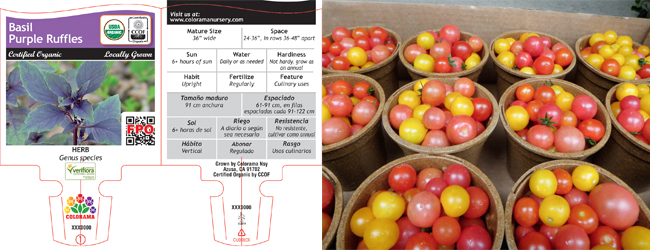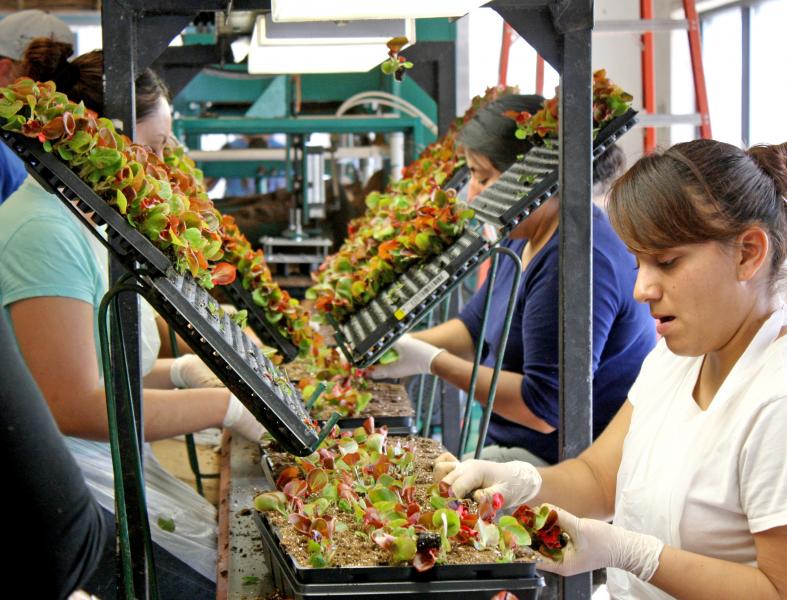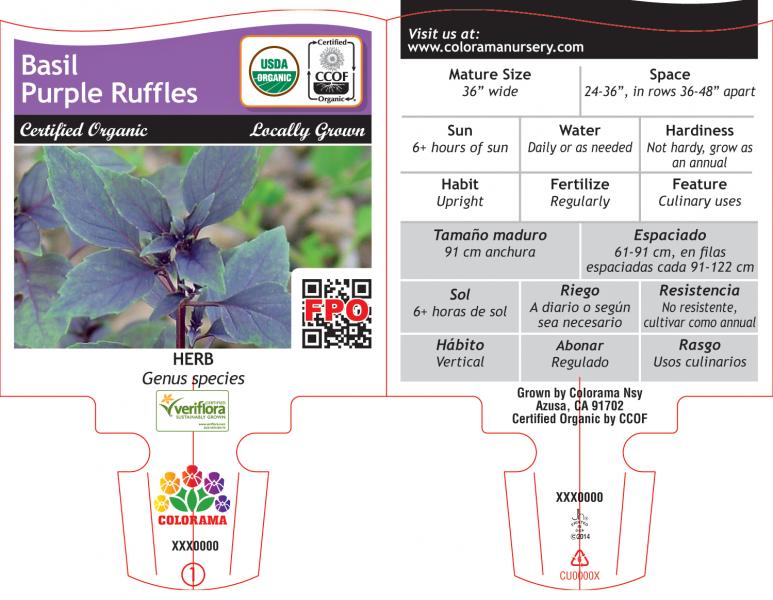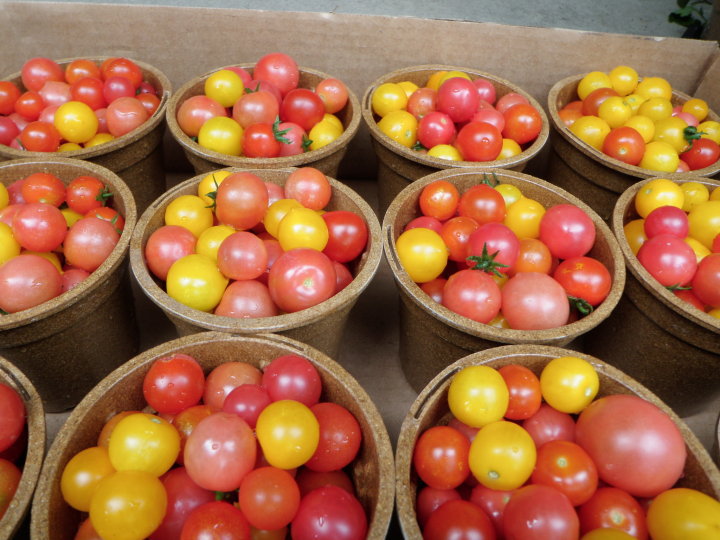
A Certified Trend
 Workers follow stringent rules while transplanting organically grown crops at Sunbelt Greenhouses.
Workers follow stringent rules while transplanting organically grown crops at Sunbelt Greenhouses.
The word "organic" is a term that certified growers will not throw around loosely.
Labeling a product as organic means that the food or other agricultural product has been produced through approved methods, methods that integrate cultural, biological and mechanical practices.
In this day and age, growers are flying greener flags and becoming more cognizant about the effects chemicals and pesticides have on the crops they produce.
Kevin Koeppler, general manager of Sunbelt Greenhouses, says his company made the decision to become organically certified after a customer requested it.
"[Our journey] started in 2008 [when] one of our largest customers requested an organics vegetable program," Koeppler says. "So to meet that need, we were challenged with getting certified and putting in a production organics program."
In order to become organically certified, growers have to follow the National Organics Program (NOP). These are rules set by the U.S. Department of Agriculture (USDA) and regulated by certifiers who oversee growers to verify that guidelines are being followed.
One such rule required Koeppler's company to file a crop organic farm plan each year.
"An organic farm plan consists of the location, the area that you are growing [product] in, the type of product that you are going to grow, the revenue and the containers, right down to the labeling, how you are going to label it and where the USDA organic label is going to be placed on the product," details Koeppler. "It's an 18-page document."
This process also lists the chemicals and fertilizers of the soil; it ensures that all are OMRI certified. Every detail must be approved.
The Cost of Going Green
Going organic means going greener, not only in crops, but also in expenses.
"It's taken a number of years for us to get that return on investment," Koeppler says. "And there's a lot of infrastructure that takes place to do organic depending on how you are set up."
Enter challenge No. 1: the fear of contamination happening in existing greenhouse structures. Many growers are faced with the obstacle of elevating products to avoid infecting crops not being grown organically.
"Because we were using an existing greenhouse, we had to go in and [install] a benching system, versus growing on the ground," Koeppler shares.
"If you have a new structure on new ground and you can prove to your certifier that it's basically non-farm type land and hasn't been used and there is no risk for contamination, you would be able to grow on the ground and not have to have elevated tables." These benches must also be made from a type of wood that does not have any preservatives in it.
Crops must be grown in a greenhouse that is segregated from other greenhouses if it is in the same gutter-connected greenhouse. A full partition must be put up so there is no chance of cross contamination with pesticides, fungicides or fertilizers from another area.
This was an incurred expense for Koeppler's company, an expense that "was pretty high for us to get into the organics program."
Steve Haston, chief operating officer of Colorama and La Verne Nurseries, concurs with Koeppler, saying operational changes must be made in order to grow certified organic crops.
"In the assembly process you have to make sure that you have designated equipment that only certified organic products go on, or you keep diligent records on the cleaning of that product before anything certified organic is placed on them," Haston states. "Racking for delivery; they either have to be on separate racks or they have to be on top of racks because you can't place anything non organic above them and then irrigate the racks and have the run through contaminate the product underneath."
 Including accurate information on a product's label is crucial for certified organic items.
Including accurate information on a product's label is crucial for certified organic items.
Green is the New Trend
Haston's company saw a trend in organic interest happening around the year 2007, actually becoming organic certified in 2008.
"We wanted to pursue an organic program, and with all the variables on the term organic or organically grown, we wanted to make sure the product that Colorama offered was 100 percent organic, truly organic," Haston says. "Having an outside third party certify the process not only gives us confidence but it gives our customers and consumers the confidence in what they are purchasing is truly organic."
The company started with herbs and then expanded into its vegetable program. "It was a learning experience," Haston admits, but the benefits for growers having organic certification outweigh the hardships.
"It protects the program," Haston says. "You make sure that everything you are doing is correct and meets regulations. And that way you don't jeopardize anything. If growers want to go through the rigors of becoming certified, it's worth it to do that; it just protects the program and the whole family of certified organic growers."
Not all consumers have hopped on the organic bandwagon. There are still some areas where there is not a market for it.
"What we find is that there is a demand for the organic product; it's kind of a geographical-type
situation in the fact that we find that the heavier metropolitan areas are more conscious of the organic situation," Koeppler says. "We get into some of our smaller markets and the organics are fine, but conventional is fine also."
Lloyd Traven, president of Peace Tree Farm LLC, says he finds it surprising that some people are still not open to the organic side of growing.
"There continues to be a number of people who mock the idea of growing without using insecticides and growth regulators," Traven says. "I hear it all the time, that it's impossible to do a wide variety of ornamental and edible crops in the same greenhouse, and do it without chemicals and growth regulators."
Traven encourages doubters to come to his greenhouse to see the crops and watch it happen. He says most are shocked when they come visit.
"There are people who come here all the time to say, 'How are you doing this?' And they're staggered, they can't believe the plants are so clean," Traven remarks. "That's how it works. That's kind of the point that we are trying to drive home. This stuff works."
Traven's company also became certified in 2008, with their organic path beginning in 2000. He can't even remember the last time he put on a spray mask.
"I don't even know where my spray mask is. It's gathering dust on a shelf somewhere."
No employee has donned a spray suit in seven or eight years, something that Traven feels, "Has value to it."
 Organic cherry tomatoes ready for sale at Peace Tree Farm.
Organic cherry tomatoes ready for sale at Peace Tree Farm.
Organic Confidence
Beside adding value to companies, there is a level of confidence that comes along with having an organic certification for consumers.
"[There's] confidence in what [consumers] are purchasing is actually organic, not organically grown with organic thoughts in mind," Haston says. "We found that consumers who really want truly organic, want truly organic. They don't want something that isn't actually what it says it's going to be. And being certified you know that that is the case."
Growers also have the opportunity to expand product offerings for consumers.
"If you're dealing with a high-end garden center, then it offers you an opportunity to sell them more product and hopefully at a better margin than a conventional grower," Koeppler remarks.
All three companies — Colorama Nursery/La Verne, Sunbelt Greenhouses and Peace Tree Farm — may have taken different steps to become certified, but they all agree on one thing, this process is not for the faint of heart.
"My advice would be to research [the process] carefully," says Koeppler. "I would be researching the market that you have to see if there is a demand for organics, and to make sure that you have the ability to sell organic product."
"Do your due diligence," Haston adds. "Make sure before you get into this that you really want to do this. It's not an easy thing to do. If it was easy, I feel like everybody would be doing this."
For more information about how your company can get certified, visit www.usda.gov.
A Certified Trend


 Video Library
Video Library 




















